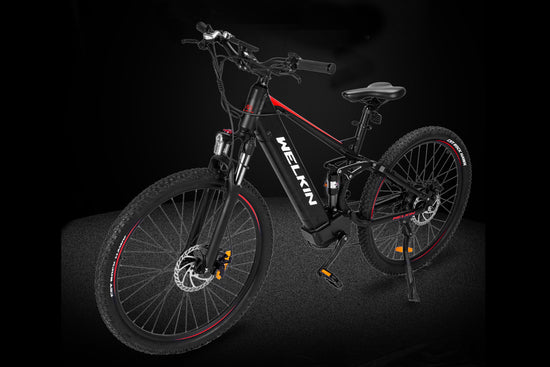The Cost of Electric Cycles: A Practical and Eco-Friendly Transportation Solution
Electric cycles, also known as e-bikes, have become increasingly popular in recent years. With their eco-friendly nature and ability to provide a convenient mode of transportation, it's no wonder that more and more people are considering investing in one. However, before making a purchase, it's important to understand the cost of electric cycles and what factors contribute to their price.
Factors Affecting the Cost of Electric Cycles
1.
Quality and Brand: Like any other product, the cost of electric cycles can vary greatly depending on the brand and quality. Well-known brands with a reputation for producing high-performance e-bikes may have a higher price tag compared to lesser-known brands. However, investing in a reputable brand often ensures better durability, performance, and after-sales support.
2.
Battery Capacity: The battery is a crucial component of an electric cycle, as it determines the range and power of the bike. E-bikes with higher battery capacities tend to have a higher price. A larger battery capacity allows for longer rides without the need for frequent recharging. It's important to consider your commuting needs and choose a battery capacity that aligns with your requirements.
3.
Motor Power: The motor is responsible for providing assistance while pedaling and determines the overall performance of the e-bike. Electric cycles with more powerful motors tend to have a higher cost. Higher motor power allows for better acceleration, climbing ability, and overall performance. Consider your intended usage and terrain when choosing the motor power that suits your needs.
4.
Frame and Components: The materials used in the frame and components of an electric cycle can significantly impact its cost. E-bikes made from lightweight and durable materials, such as carbon fiber or aluminum, may be more expensive than those made from steel. Similarly, high-quality components, such as gears, brakes, and suspension, can contribute to the overall cost.
5.
Additional Features: Some electric cycles come with additional features that enhance the riding experience. These can include built-in lights, integrated GPS systems, smartphone connectivity, and advanced suspension systems. While these features can add to the cost, they may also provide added convenience and safety.
Understanding the Price Range
The cost of electric cycles can vary widely, depending on the factors mentioned above. On average, you can expect to find e-bikes priced anywhere from $500 to $5000 or more. Entry-level electric cycles with basic features and lower battery capacities tend to be more affordable, while high-end models with advanced features and higher performance capabilities can be more expensive.
It's important to consider your budget and requirements when choosing an electric cycle. While it may be tempting to go for the cheapest option available, investing in a higher-quality e-bike can provide a better overall experience and longer lifespan.
Long-Term Cost Benefits of Electric Cycles
While the upfront cost of an electric cycle may seem higher than that of a traditional bicycle, it's essential to consider the long-term cost benefits. Electric cycles offer several advantages that can help offset their initial investment:
1.
Reduced Fuel Costs: Electric cycles are powered by electricity, which is generally cheaper than gasoline. By using an e-bike for your daily commute or errands, you can significantly reduce your fuel expenses.
2.
Lower Maintenance Costs: Electric cycles have fewer moving parts compared to cars or motorcycles, resulting in lower maintenance costs. With fewer components to service and replace, you can save money on regular maintenance and repairs.
3.
Environmental Benefits: By opting for an electric cycle, you contribute to reducing air pollution and greenhouse gas emissions. This not only benefits the environment but also helps create a healthier and more sustainable future.
4.
Health Benefits: Riding an electric cycle provides a form of exercise that is gentle on the joints and can improve cardiovascular health. By incorporating physical activity into your daily routine, you can potentially reduce healthcare costs in the long run.
Conclusion
When considering the cost of electric cycles, it's important to look beyond the initial price tag. Factors such as brand reputation, battery capacity, motor power, frame materials, and additional features all contribute to the overall cost. While e-bikes may have a higher upfront investment, they offer long-term cost benefits, including reduced fuel and maintenance expenses, environmental advantages, and potential health benefits.
Investing in an electric cycle is not only a practical transportation solution but also a step towards a greener and more sustainable future. By understanding the cost factors and long-term benefits, you can make an informed decision and choose an e-bike that aligns with your budget and requirements.
best electric bikes Categories:
Hot Products 2024 2025 2026:
24 Inch Fat Tire Electric Bike Warranty -- Help Center
750 Watt Electric Fat Tire Bike troubleshooting
Adult Electric Folding Bike OEM













